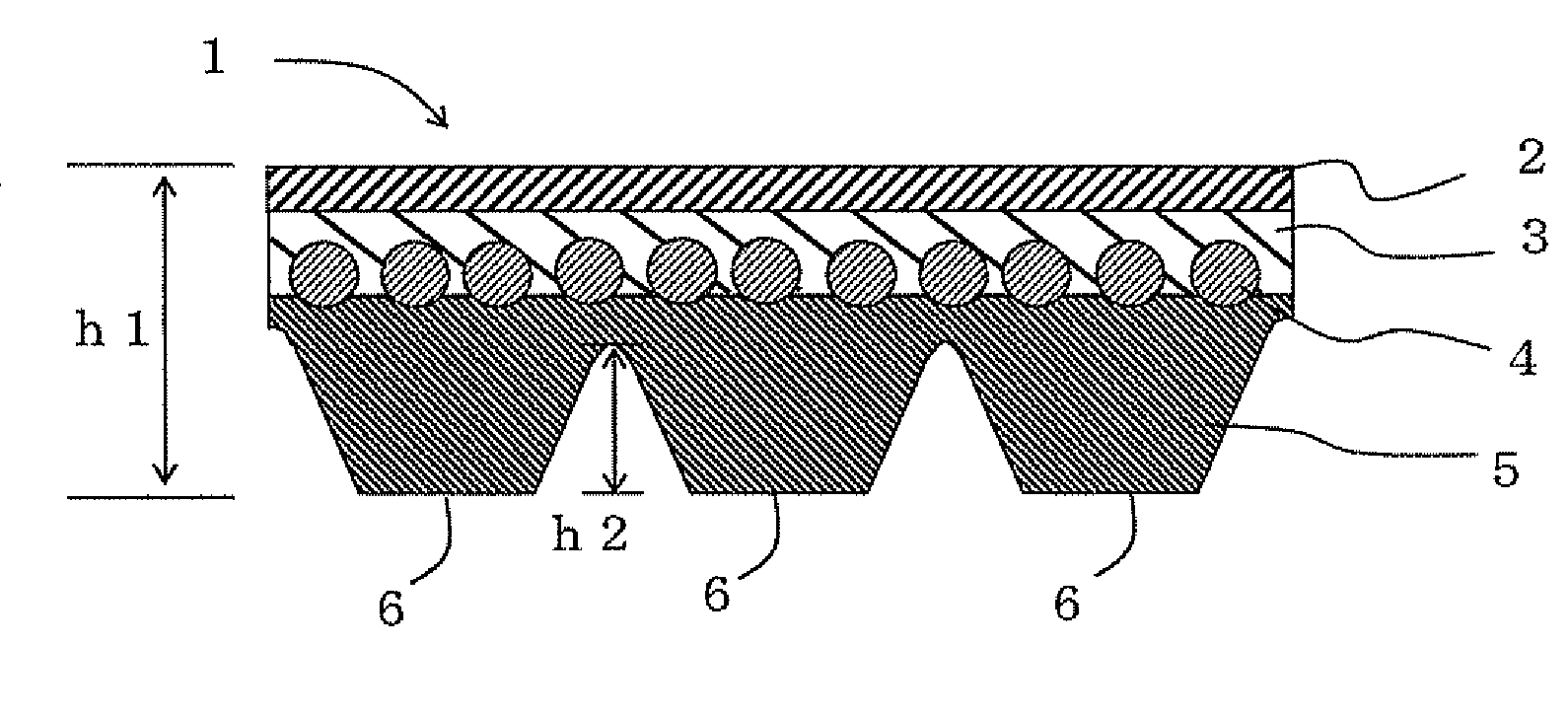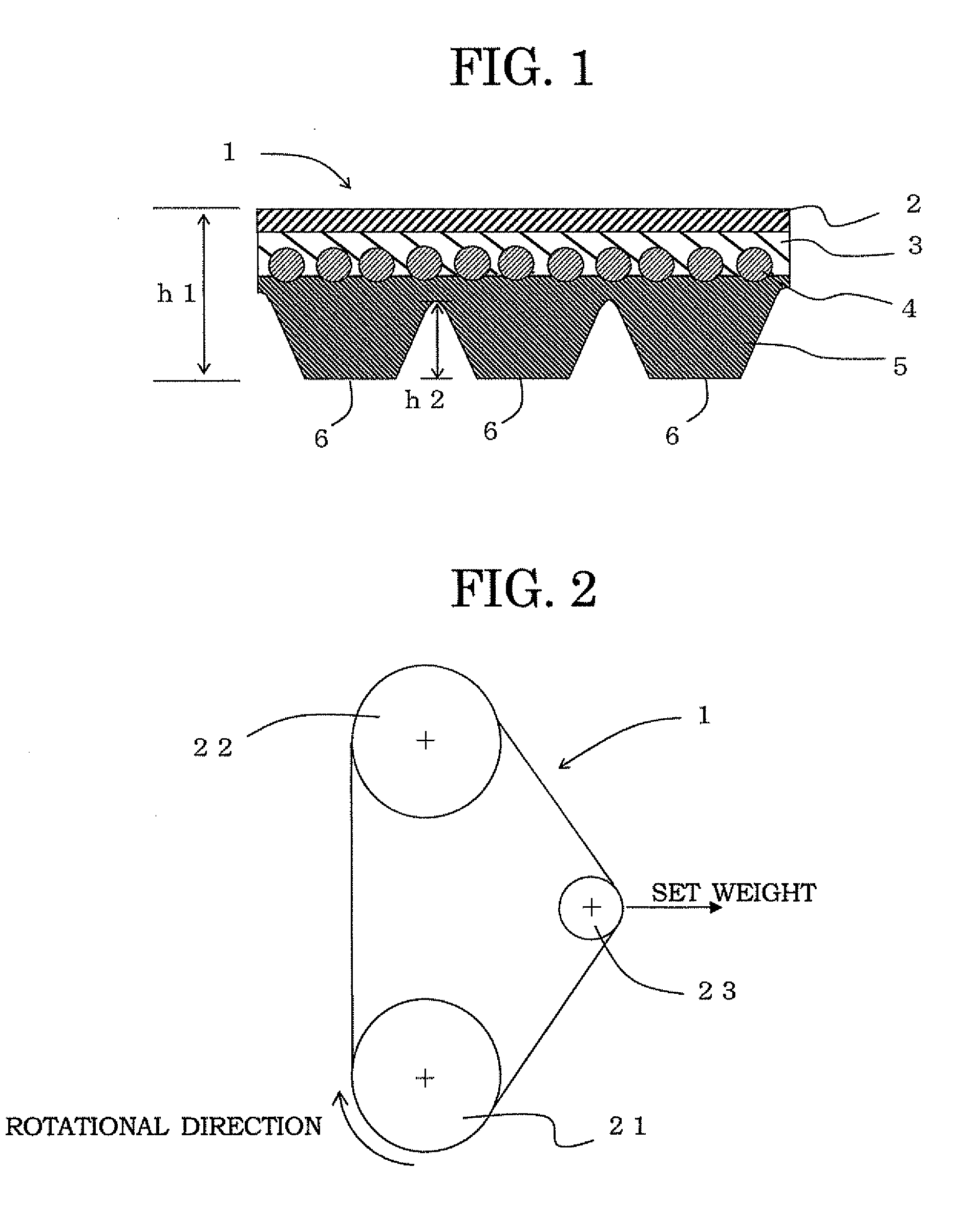Transmission Belt
a transmission belt and belt body technology, applied in the field of transmission belts, can solve the problems of cracks, transmission belts to be heated to a higher temperature than ever, tight packing of parts, etc., and achieve the effects of suppressing deterioration, reducing hysteresis loss, and high modulus
- Summary
- Abstract
- Description
- Claims
- Application Information
AI Technical Summary
Benefits of technology
Problems solved by technology
Method used
Image
Examples
examples
[0111]Now, the present invention will be described in more detail by citing Examples without intention to limit the present invention thereto.
examples 1-9
Comparative Examples 1-7
Mixing Ingredients
[0112]The mixing ingredients used in Examples and Comparative Examples are shown in Table 1, and core wires used therein are shown in Table 2. For all of the back-side rubber layers and the compression rubber layers of Examples and Comparative Examples, the same ingredients are used. The formulations of the back-side rubber layer and the compression rubber layer are shown in Table 3. The formulations of the adhesive rubber layers of the transmission belts of Examples and the Comparative Examples and core wires used therein are shown in Tables 4 and 5, respectively.
TABLE 1Mixing IngredientsManufacturersTrade namesEPDM1Sumitomo ChemicalESPRENE 301(ethylene-propylene-diene-terpolymer:diene component DCPD*)EPDM2JSREP33(ethylene-propylene-diene-terpolymer:diene component ENB*)Crosslinking Agent 1 (trymethylolSeiko ChemicalHICLOTH Mpropane trimethacrylate)Crosslinking Agent 2 (zincKawaguchi Chemical IndustryACTOR TSHdimethacrylate)Zinc OxideSakai ...
PUM
| Property | Measurement | Unit |
|---|---|---|
| Temperature | aaaaa | aaaaa |
| Fraction | aaaaa | aaaaa |
| Fraction | aaaaa | aaaaa |
Abstract
Description
Claims
Application Information
 Login to View More
Login to View More - R&D
- Intellectual Property
- Life Sciences
- Materials
- Tech Scout
- Unparalleled Data Quality
- Higher Quality Content
- 60% Fewer Hallucinations
Browse by: Latest US Patents, China's latest patents, Technical Efficacy Thesaurus, Application Domain, Technology Topic, Popular Technical Reports.
© 2025 PatSnap. All rights reserved.Legal|Privacy policy|Modern Slavery Act Transparency Statement|Sitemap|About US| Contact US: help@patsnap.com


